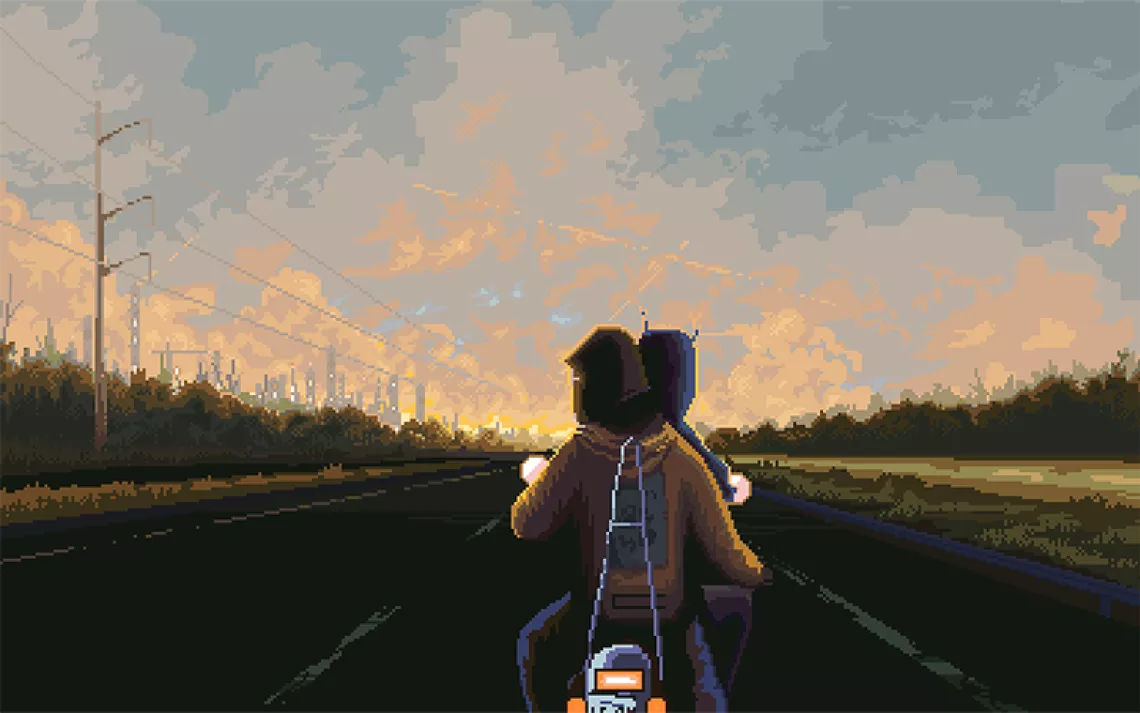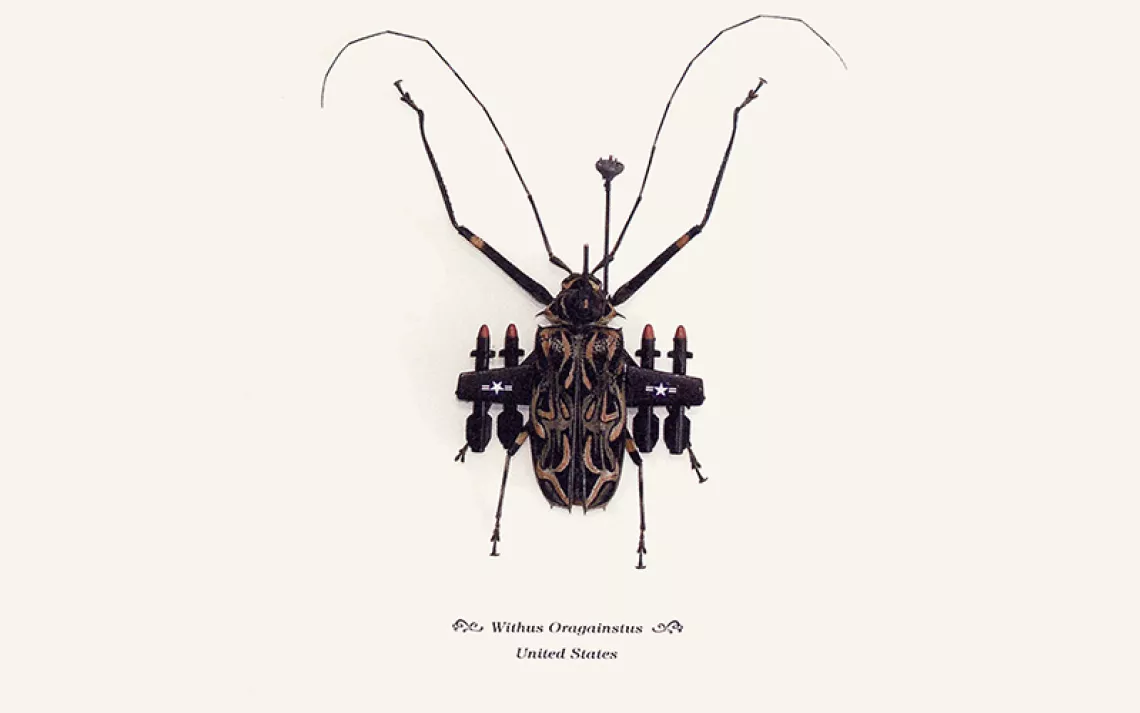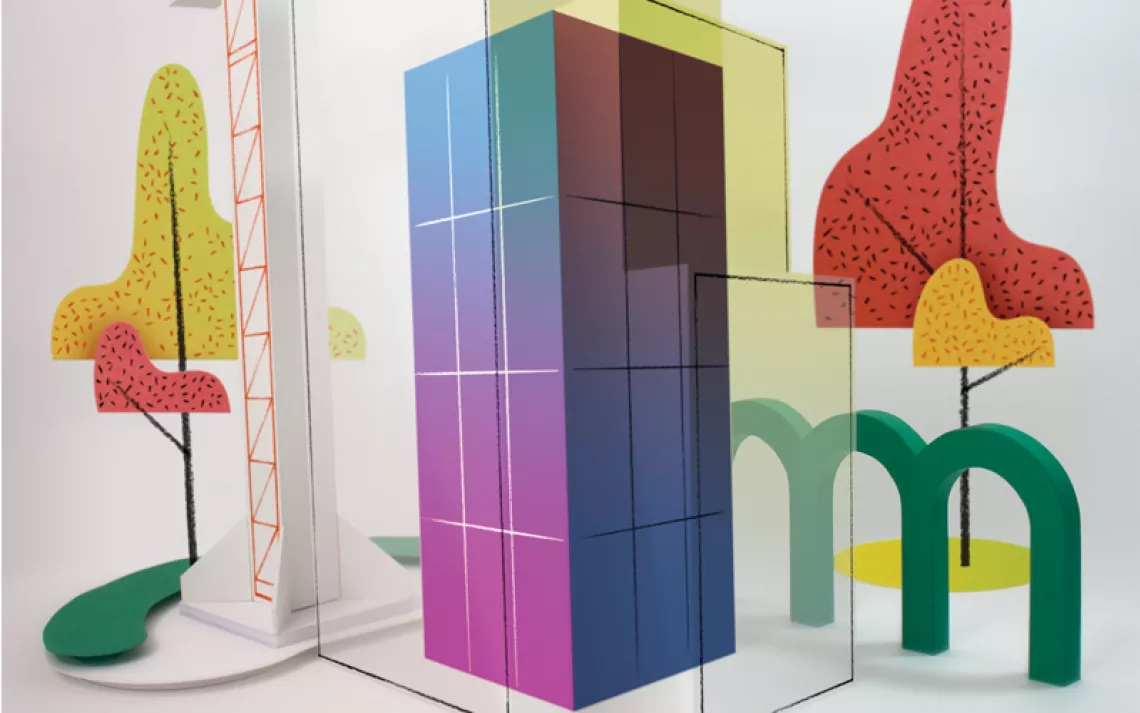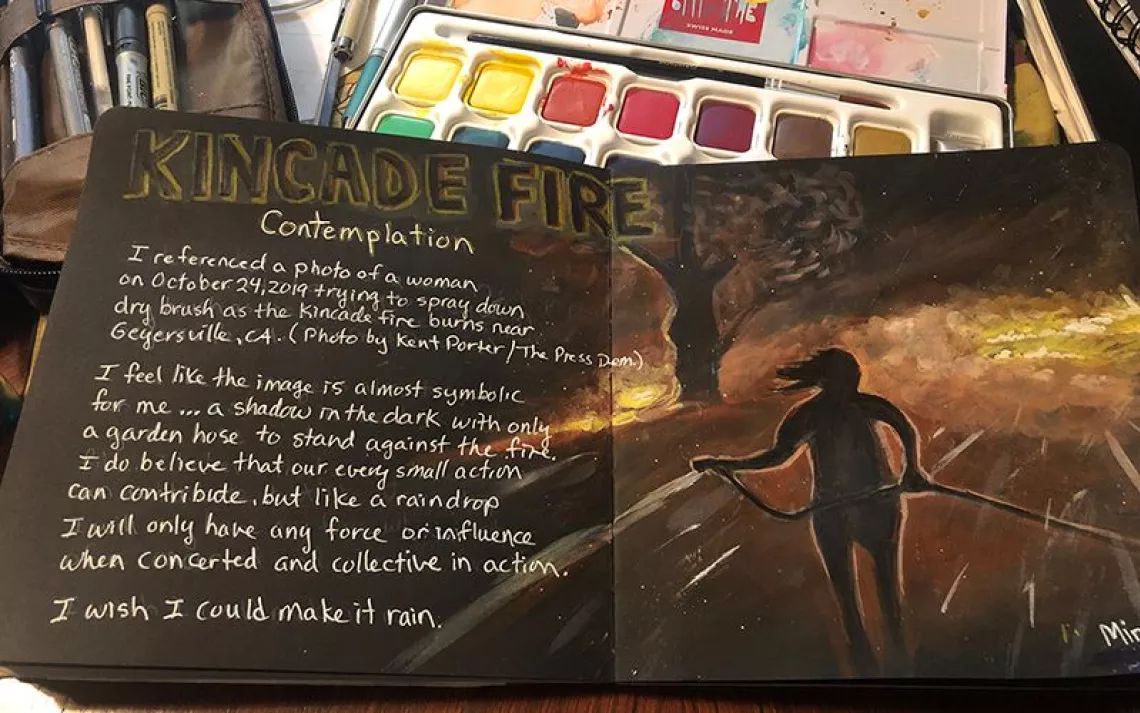What Can the Environmental Movement Learn From Asian American Art?
“Sowing Agency” seeks to answer that
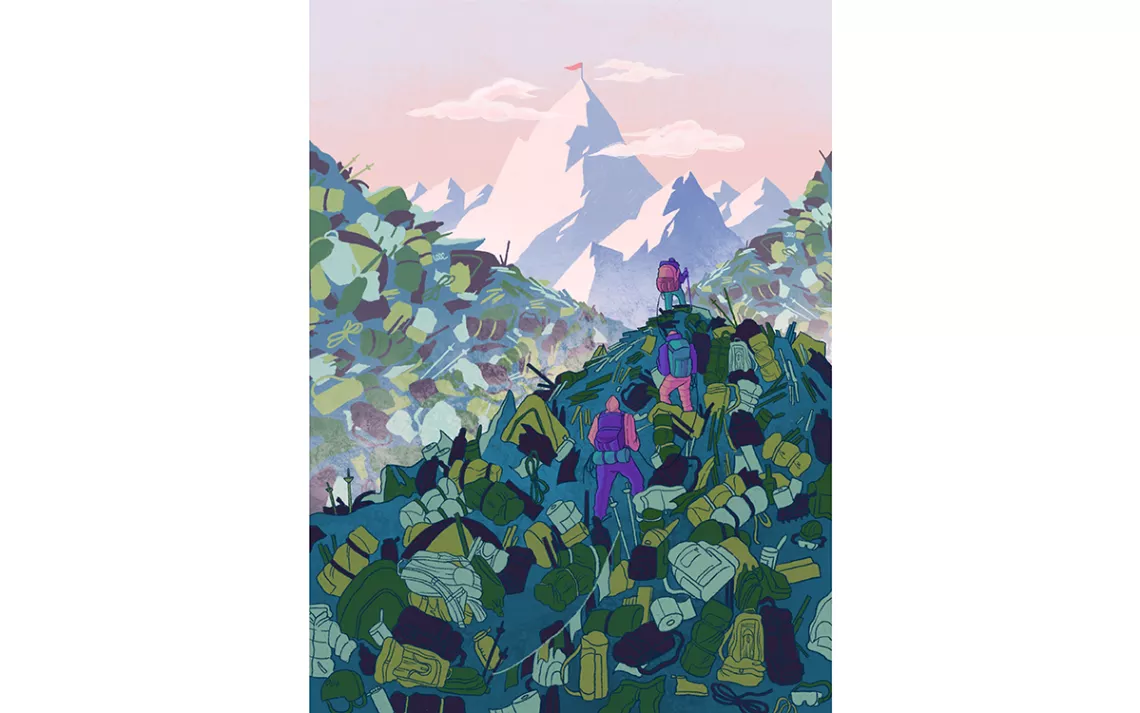
"Mountain Climbing Pollution" | Image courtesy of the artist, Tenzin Tsering
Discrimination against Asian Americans is nothing new in the United States, though it has taken on novel forms in the past year, from the racialization of COVID-19 as the “China virus” to the surge of violent attacks against Asian elders. In the midst of this tense political-pandemic landscape, conversations around what it means to be an Asian American and Pacific Islander (AAPI) are burgeoning once again in the mainstream.
That conversation has historically focused on matters of identity and cultural heritage and left out the equally significant intersections of the climate crisis and environmental justice.
A vanguard in-person/virtual exhibit at the SOMArts Cultural Center in San Francisco seeks to change that. Sowing Agency: Seeding the Future for Environmental Justice aims to cultivate a fresh cultural consciousness in the discourse on climate resilience. Featuring photography, paintings, mixed-media installations, and video art from over 20 AAPI women—a talented selection of activists, educators, researchers, and artists—Sowing Agency highlights AAPI contributions to the fight against climate change and environmental degradation in the Bay Area and beyond.
“I think the role of artists is to inspire a vision of what’s possible and to model it for others,” Lisa Pradhan, the curator of the exhibition, told Sierra. “Artists have this really beautiful way of shifting how you think about the world.”
The seed for the Sowing Agency exhibition was planted in late April 2020, around the time COVID-19 upended the cultural infrastructure of the art world.
A coalition of diverse partner organizations—the Asian Pacific Environmental Network (APEN), the Berkeley South Asian Radical History Walking Tour, South of Market Community Action Network, 18 Million Rising, the Asian Art Museum, and the Asian American Women’s Artists Association (AAWAA)—secured funding for the show in May, and by July, Pradhan was invited to curate it.
Pradhan, an active participant in the SOMA’s AAPI arts community for the past six years and the communications manager at Earthjustice, felt that conversations around the environment were missing.
“The longer I started working at Earthjustice, and the more I was exposed to large-scale environmental action, the more I started to wonder, ‘Where are these conversations happening within my own community?’” she said. “Maybe these conversations already exist, but I wasn’t seeing it. I was really curious to learn more about the BIPOC, and in particular, the AAPI folks making environmental art.”
While preparing for the exhibition, Pradhan wasn’t able to find much information on the role of Asian Americans in environmentalism. “If you do a basic Google search on the intersection between Asian Americans and the environment, there’s so little there,” Pradhan said.
Pradhan found herself wrestling with larger concerns about the cultural barriers that render AAPI communities siloed from greater civil society, such as the fractured nature of the Asian American community, with the vast array of ethnic groups from the Asian continent unable to unify under shared political goals. She also considered how the language around environmental issues is devoid of cultural nuance. For instance, the broader environmental movement, according to Pradhan, doesn’t acknowledge the loss of native tongue as a byproduct of the climate crisis (think about the climate refugees forced to settle in and adapt to a foreign land). And despite the fact that many Asian American communities engage in sustainable practices, the American discourse around sustainability doesn’t recognize these practices as “green” or “environmentally friendly,” but instead dismisses them as immigrant culture.
“Aunties saving wrappers and jars feels like it's more of an immigrant thing,” Pradhan said. “But when white folks do that, they call it ‘reduce, reuse, recycle.’ Through that frame, it becomes more of an environmental thing.”
Pradhan concluded that this information gap is not so much a matter of cultural riffs, but rather a lack of recognition of the AAPI communities who’ve been organizing in the shadows of the environmental movement for decades.
Since 1993, APEN has been building climate resilience in working-class communities of color across the Bay Area to foster support for affordable housing and clean energy, and most notably, to cultivate resistance against the expansion of the Chevron coal plant into the Laotian community of Richmond, California. In 2014, numerous South Asian American organizations—Brown and Green, Sikhs for Climate Justice, and Addhikaar to name a few—showed up at New York City’s Climate March. And from 2015 to 2019, SOMA Pilipinas, the South of Market Community Action Network, and other local groups organized a successful grassroots campaign that stopped the construction of a skyscraper near San Francisco's Victoria Manalo Draves Park—a cultural hub for the Filipino community—that would’ve limited access to open green spaces and sunlight.
Inspired by these organizations, Pradhan, alongside Diana Li, the managing director of AAWAA, who organized the exhibition, decided to assemble the show around the concept of land, and how colonization, migration, and forced displacement shape API folks' relationship to the natural world. For example, Priya Kaur Handa, one of the featured artists in Sowing Agency, displayed two paintings and a mural inspired by the Indian farmers' protests. Handa is a child of Punjabi farmers; her bright, vivid paintings are deeply personal, presenting an homage to the leaders of the farmworker movement—mothers, grandmothers, and Sikh warriors known as the Nihang—who’ve risked their lives for decades to protect their land and family in the face of famine, drought, and harsh working conditions.
“Farming is definitely a part of me and where I come from,” Handa told Sierra. “I might not be a farmer, but I also know that I wouldn't be who I am today if it wasn't for them.”
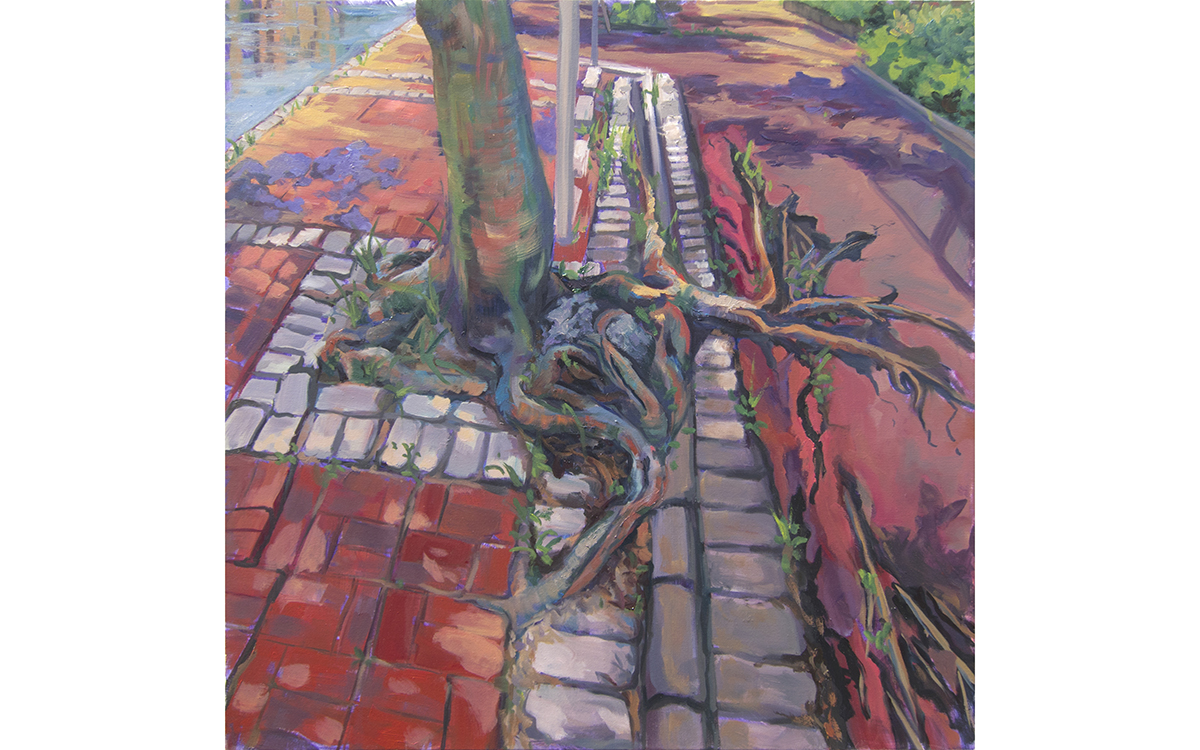
"Bursting Out" | Image courtesy of the artist, Claire Lau
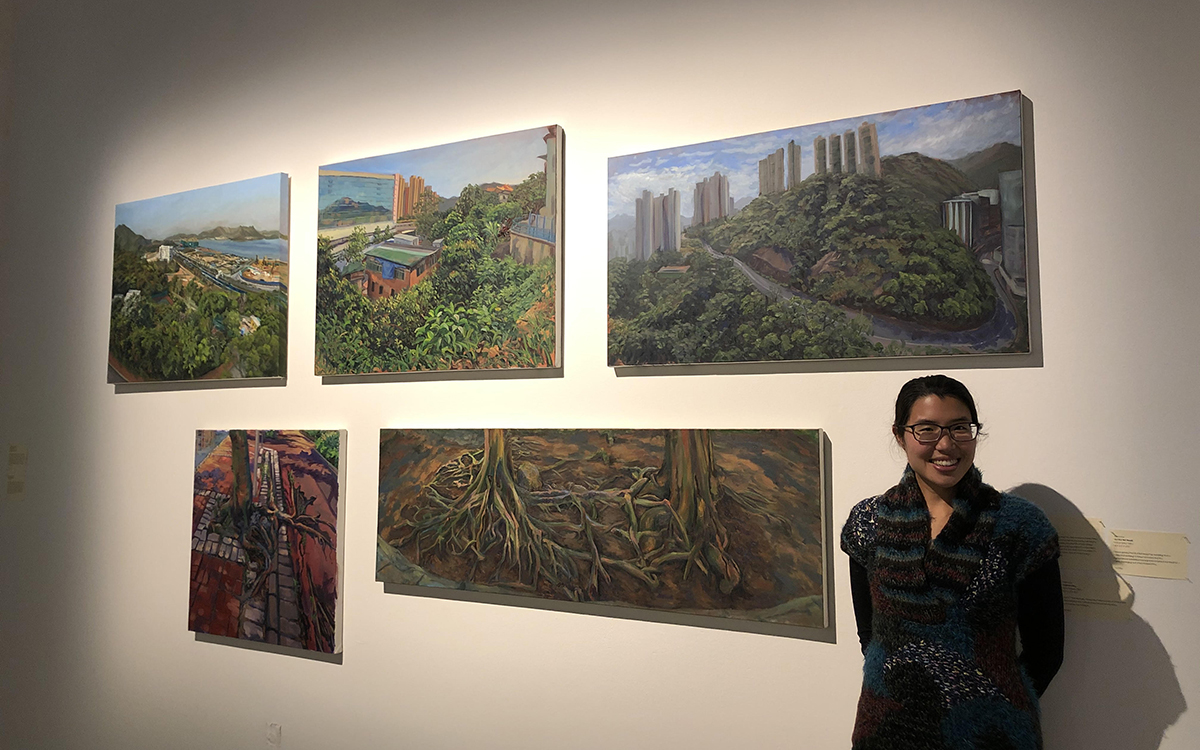
Claire Lau with paintings from her collections "Banyan Trees" and "Hong Kong Cityscapes" | Image courtesy of the artist, Claire Lau
Despite the political undertones to her paintings, Handa does not see her artwork as directly part of the broader environmental justice movement. She credits instead the political organizers actively fighting in the streets to change our political and economic system. She does, however, see her work as a byproduct of it—a platform to process feelings of disillusion over the declining state of the earth. Her love for nature, inspired by childhood memories of growing flowers in her family’s yard and the significant role herbal and plant medicine plays in her wellness practices, bleeds throughout her politics and creative work, especially in her murals, which are often collaborative community projects that engage with land-sovereignty issues.
“Sometimes it isn't as black and white as creating a canvas or a mural to engage with climate change,” Handa said. “Sometimes it's about using an artistic tool to get other people’s hands dirty so they can learn about another person's struggle and see why solidarity is necessary.”
Claire Lau, another artist featured in Sowing Agency, shares a similar sentiment. On display are plein air oil paintings from her “Banyan Trees” and “Hong Kong Cityscapes” collections, produced in Hong Kong, where she’s originally from. These collections were inspired by the contemporary state of the city’s built environment and its environmental conditions: a dense metropolis shrouded in a thick film of air pollution, whose lush, ecological landscapes are now construction grounds for luxury, high-rise apartments. Even though these paintings explore the environmental impact of urbanization and wealth inequality, Lau doesn’t classify her work as explicitly political. But as both a practicing artist and an organizer—she has campaigned for numerous local campaigns in San Francisco since 2016 and served as the Bay Area director of Bernie Sanders's 2020 presidential campaign—Lau is beginning to grapple with how she can marry her art with her activism.
“There’s various levels of engagement with the climate crisis, from going out to fight for policy to simply connecting with nature,” Lau told Sierra. “But I’m still very concerned about it, and it does carry into who I am as a person and what I do with my art.”
Lau finds the act of painting outdoors healing, especially during this fraught political moment where Asian Americans are deemed a threat to the nation. “It’s been very mentally exhausting,” Lau said. “Painting outside has been really healing and refreshing. It reminds me that there is still beauty in this world.”
While the goal of Sowing Agency is to amplify new ways of thinking and relating to the environmental justice movement, it’s ultimately a space for the Asian American community to seek comfort in one another.
“Now more than ever, it's so important to have vibrant Asian American community spaces that remind people that their voices matter, that their perspectives matter, that their communities matter,” Pradhan said. “The feeling of being comfortable in space is something that has been taken away from so many people.”
“Our hope with the show is that there’s a little bit more room for freedom.”
 The Magazine of The Sierra Club
The Magazine of The Sierra Club
